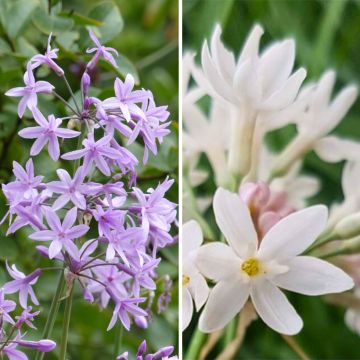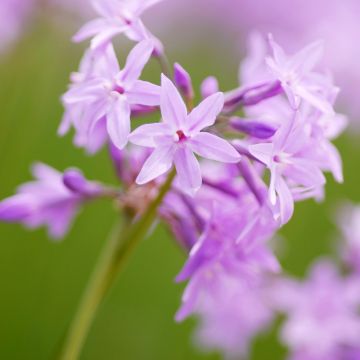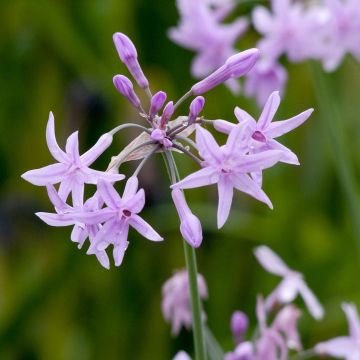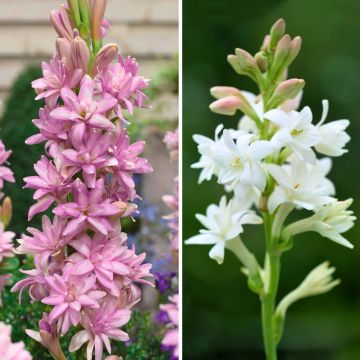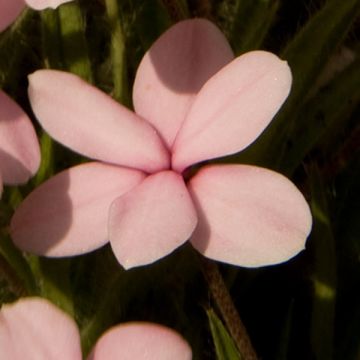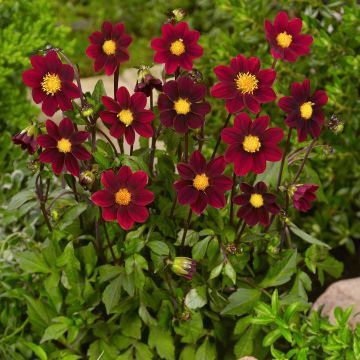

Tulbaghia violacea Pearl
Tulbaghia violacea Pearl
Tulbaghia violacea Pearl
Society garlic 'Pearl'
Good recovery, looking forward to seeing it in bloom.
Lisa, 30/10/2022
Special offer!
Receive a €20 voucher for any order over €90 (excluding delivery costs, credit notes, and plastic-free options)!
1- Add your favorite plants to your cart.
2- Once you have reached €90, confirm your order (you can even choose the delivery date!).
3- As soon as your order is shipped, you will receive an email containing your voucher code, valid for 3 months (90 days).
Your voucher is unique and can only be used once, for any order with a minimum value of €20, excluding delivery costs.
Can be combined with other current offers, non-divisible and non-refundable.
Home or relay delivery (depending on size and destination)
Schedule delivery date,
and select date in basket
This plant carries a 6 months recovery warranty
More information
We guarantee the quality of our plants for a full growing cycle, and will replace at our expense any plant that fails to recover under normal climatic and planting conditions.

Would this plant suit my garden?
Set up your Plantfit profile →
Description
Tulbaghia violacea 'Pearl' is a delightful variety of society garlic, distinguished by the delicate colour of its flowering. Over time, it forms a beautiful tuft of leaves from which emerge numerous small umbels of pink star-shaped flowers that quickly turn white. This aromatic bulbous plant is used to enhance salads, just like chives or garlic. Its foliage persists throughout winter, and it blooms almost all year round in mild climates. With its resemblance to a small agapanthus, it works wonders in borders and beds, and will create pretty flowering pots for patios and balconies.
It belongs to the Amaryllidaceae family, just like leeks, garlic, and onions. It originates from South Africa, specifically from the meadows of Lesotho and Swaziland, which benefit from rather dry winters and rainy summers. It is a perennial herbaceous plant with a fleshy tuberous root that forms a tuft of thin, ribbon-like leaves. The foliage is evergreen depending on the winter temperature. It boasts a long summer flowering.
The 'Pearl' cultivar is a very beautiful horticultural variety that blooms abundantly for a long time. This plant develops into an expanding tuft over time through its rhizomes. When in bloom, it measures approximately 40 to 45cm (16 to 18in) in height and 40cm (16in) in width. Its particularly long flowering starts from May (early June in average climates) and doesn't end until the arrival of cold weather in October. In milder regions, it can bloom almost all year round. Clumps of leaves emerge from the floral stems, bearing false umbels of tubular flowers in a very pale-pink colour that open into 6-petalled stars that are almost white, around a yellow centre. The flowers exude a sweet honey scent, but it is overwhelmed by the garlic smell emanating from the entire plant. They are followed by the formation of seeds that can self-sow, but may not necessarily produce flowers identical to those of the parent plant. The grey-green foliage is thin, narrow, erect, and linear, yet flexible enough to arch slightly. It is highly aromatic and emits a powerful garlic odour that is perceptible from a few metres away in warm weather.
It is a very attractive plant, appreciated for its prolonged flowering that extends into autumn. It easily adds colour to gardens or patios during a period of the year that offers few blooms. As a border plant or in a rockery, it can replace agapanthus or be planted with them, choosing from the more compact varieties (Agapanthus 'Silver Moon', A. 'Golden Drop'). However, if its fragrance is too much, plant it a bit further back. This potent garlic-scented fragrance repels harmful insects like aphids and also has fungicidal properties. It will be useful in vegetable gardens to protect carrots, lettuce, beets, and peaches, as well as in ornamental gardens. As it is quite sensitive to cold, especially in moist soil during winter, it is often preferable to cultivate it in a pot, except in very mild climates. This plant thrives outdoors in summer, exposed to light but without direct sunlight. You can use finely chopped leaves in your salads, or even add a few flowers. It is a good seaside plant, as it tolerates sandy soils and sea spray. The most favourable climate for it will be a mild oceanic type. In hot regions, it will require regular watering in summer, or it may disappear in the medium term.
Report an error about the product description
Tulbaghia violacea Pearl in pictures




Plant habit
Flowering
Foliage
Botanical data
Tulbaghia
violacea
Pearl
Alliaceae
Society garlic 'Pearl'
Cultivar or hybrid
Other Tulbaghia
View all →Planting and care
It appreciates well-drained soils, whether slightly acidic, neutral, or slightly calcareous. It prefers light and sandy soils. Its hardiness (-12°C (10.4°F)) will be reduced in wet and poorly drained soils in winter. A mix of leaf compost and sand makes a good substrate for its cultivation. Choose a sunny or partially shaded exposure in hot and sunny regions. It appreciates moist soils during its flowering period (spring-summer), but drier in autumn and winter. It tolerates sea spray well.
Repot your young plants in a container about 20cm (8in) in diameter containing 1/3 potting soil, 1/3 compost, and 1/3 sand. Leave them in a warm and well-lit place (but without direct sunlight) until the last frost. You can then take your pot outside. Bring them indoors at the beginning of autumn when temperatures start to drop.
In the ground, space the plants 20cm (8in) apart. In autumn, cut back the clumps to 3 or 4cm (1 or 2in) above the ground and mulch heavily to protect from the cold. It is hardy to -5 to -10°C (23 to 14°F), depending on soil drainage.
In pots, water two to three times a week during the growing season, and apply liquid fertiliser at least every 15 days for good flowering. In winter, reduce watering. Repot every three years.
Planting period
Intended location
Care
-
, onOrder confirmed
Reply from on Promesse de fleurs
Similar products
Haven't found what you were looking for?
Hardiness is the lowest winter temperature a plant can endure without suffering serious damage or even dying. However, hardiness is affected by location (a sheltered area, such as a patio), protection (winter cover) and soil type (hardiness is improved by well-drained soil).

Photo Sharing Terms & Conditions
In order to encourage gardeners to interact and share their experiences, Promesse de fleurs offers various media enabling content to be uploaded onto its Site - in particular via the ‘Photo sharing’ module.
The User agrees to refrain from:
- Posting any content that is illegal, prejudicial, insulting, racist, inciteful to hatred, revisionist, contrary to public decency, that infringes on privacy or on the privacy rights of third parties, in particular the publicity rights of persons and goods, intellectual property rights, or the right to privacy.
- Submitting content on behalf of a third party;
- Impersonate the identity of a third party and/or publish any personal information about a third party;
In general, the User undertakes to refrain from any unethical behaviour.
All Content (in particular text, comments, files, images, photos, videos, creative works, etc.), which may be subject to property or intellectual property rights, image or other private rights, shall remain the property of the User, subject to the limited rights granted by the terms of the licence granted by Promesse de fleurs as stated below. Users are at liberty to publish or not to publish such Content on the Site, notably via the ‘Photo Sharing’ facility, and accept that this Content shall be made public and freely accessible, notably on the Internet.
Users further acknowledge, undertake to have ,and guarantee that they hold all necessary rights and permissions to publish such material on the Site, in particular with regard to the legislation in force pertaining to any privacy, property, intellectual property, image, or contractual rights, or rights of any other nature. By publishing such Content on the Site, Users acknowledge accepting full liability as publishers of the Content within the meaning of the law, and grant Promesse de fleurs, free of charge, an inclusive, worldwide licence for the said Content for the entire duration of its publication, including all reproduction, representation, up/downloading, displaying, performing, transmission, and storage rights.
Users also grant permission for their name to be linked to the Content and accept that this link may not always be made available.
By engaging in posting material, Users consent to their Content becoming automatically accessible on the Internet, in particular on other sites and/or blogs and/or web pages of the Promesse de fleurs site, including in particular social pages and the Promesse de fleurs catalogue.
Users may secure the removal of entrusted content free of charge by issuing a simple request via our contact form.
The flowering period indicated on our website applies to countries and regions located in USDA zone 8 (France, the United Kingdom, Ireland, the Netherlands, etc.)
It will vary according to where you live:
- In zones 9 to 10 (Italy, Spain, Greece, etc.), flowering will occur about 2 to 4 weeks earlier.
- In zones 6 to 7 (Germany, Poland, Slovenia, and lower mountainous regions), flowering will be delayed by 2 to 3 weeks.
- In zone 5 (Central Europe, Scandinavia), blooming will be delayed by 3 to 5 weeks.
In temperate climates, pruning of spring-flowering shrubs (forsythia, spireas, etc.) should be done just after flowering.
Pruning of summer-flowering shrubs (Indian Lilac, Perovskia, etc.) can be done in winter or spring.
In cold regions as well as with frost-sensitive plants, avoid pruning too early when severe frosts may still occur.
The planting period indicated on our website applies to countries and regions located in USDA zone 8 (France, United Kingdom, Ireland, Netherlands).
It will vary according to where you live:
- In Mediterranean zones (Marseille, Madrid, Milan, etc.), autumn and winter are the best planting periods.
- In continental zones (Strasbourg, Munich, Vienna, etc.), delay planting by 2 to 3 weeks in spring and bring it forward by 2 to 4 weeks in autumn.
- In mountainous regions (the Alps, Pyrenees, Carpathians, etc.), it is best to plant in late spring (May-June) or late summer (August-September).
The harvesting period indicated on our website applies to countries and regions in USDA zone 8 (France, England, Ireland, the Netherlands).
In colder areas (Scandinavia, Poland, Austria...) fruit and vegetable harvests are likely to be delayed by 3-4 weeks.
In warmer areas (Italy, Spain, Greece, etc.), harvesting will probably take place earlier, depending on weather conditions.
The sowing periods indicated on our website apply to countries and regions within USDA Zone 8 (France, UK, Ireland, Netherlands).
In colder areas (Scandinavia, Poland, Austria...), delay any outdoor sowing by 3-4 weeks, or sow under glass.
In warmer climes (Italy, Spain, Greece, etc.), bring outdoor sowing forward by a few weeks.






























